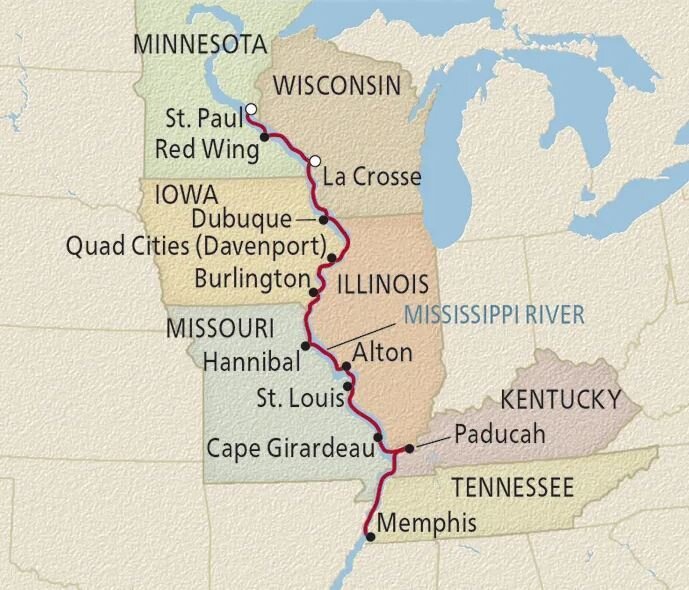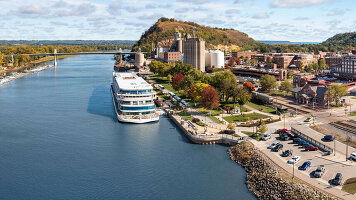Overview
Itinerary
Embark your ship and settle into your stateroom. Situated on the Chickasaw bluffs overlooking the Mississippi River, Memphis is revered for its blues music and barbecue. Some of the most famed names in blues, including B.B. King, got their start in Memphis, and the city has a well-deserved reputation as the home of this classic American music genre. Memphis is also celebrated for its culinary heritage and is renowned for its traditional barbecue restaurants serving flavorful dry rub ribs. Rich in history and culture, Memphis's many notable museums include the National Civil Rights Museum and Elvis Presley's Graceland.
The rich and varied landscape along the Mississippi River is characterized by wide floodplains, rocky outcroppings and sandy beaches nestled between fertile farmland and bustling bankside cities. Indigenous peoples used the river for thousands of years before Europeans began exploring the region during the 16th and 17th centuries. It became an important trade route during the 19th century, with the rise of steamboats and river commerce. Today, the river is an important ecological region, with diverse wildlife and habitats, including wetlands and forests.
Located at the confluence of the Tennessee and Ohio rivers, Paducah is one of Kentucky's hidden gems. A UNESCO Creative City, Paducah is famed for its preserved 19th-century architecture and historic buildings that line the main street. The city's Downtown streets are a delight to explore on foot. The National Quilt Museum houses a superb collection of contemporary style quilts by artists from around the globe. Paducah is also famed for its 'Wall to Wall' murals, colorful paintings by different artists that document the heritage and history of the city and the region.
The largest city between St. Louis and Memphis, Cape Girardeau has a long and storied history. It was an important site during the Civil War and once housed a number of forts, including Fort D, which remains a well-preserved historic site to this day. Fondly referred to as 'The Cape' by locals, this riverside destination is also popular with visitors who come to enjoy nature. The Cape Girardeau Conservation Nature Center is a stunning facility with verdant landscapes and picturesque trails to explore, as well as an abundance of flora and fauna.
During the 19th century, St. Louis was a gateway into the Louisiana Territory. In 1904, the city gained recognition as host of a world's fair (officially called the Louisiana Purchase Exposition), whereby some accounts the ice-cream cone was introduced. Today, it is home to rich architectural treasures—among them, the Cathedral Basilica of St. Louis, with its 41-million-piece mosaic; the Renaissance Revival City Hall; the 19th-century Old Courthouse; and the Gateway Arch, standing along the Mississippi as a monument to westward expansion.
Alton lies along The Meeting of the Great Rivers Scenic Route, where the Mississippi and the Illinois Rivers converge. The road to this historic town is considered one of America's most picturesque drives, with its limestone river bluffs, flowering trees and whistling birds. Along the bluffs is a mural of the Piasa Bird, a dragon-like creature of Native American mythology, with the horns of a deer and a face like a man. First discovered during the 17th century, it had worn away due to the elements. It has since been restored and is today a celebrated landmark.
Hannibal is the childhood home of Samuel Langhorne Clemens, or Mark Twain, and the inspiration for his beloved stories of Tom Sawyer and Huckleberry Finn. Prior to the 1803 Louisiana Purchase and arrival of European settlers, a variety of indigenous Native American tribes called the area home. Hannibal grew into the primary port for steamboats and flatboats traveling the Upper Mississippi. “The Unsinkable Molly Brown,” the early 20th-century socialite, philanthropist and survivor of the Titanic tragedy, was also born here.
The US flag was first raised over Iowa in Burlington—in 1805—by Lieutenant Zebulon Pike during his Mississippi explorations.
Later, it became an outpost for the American Fur Company, a trading enterprise founded by John Jacob Astor. In 1834, it took its present name after the Vermont birthplace of its first settler, John Gray. During the steamboat era, it was a major port along the river. Today, the city is home to many magnificent buildings on the National Register of Historic Places, including the art deco Capitol Theater and the Gothic Revival St. Paul's Church.
Straddling the confluence of the Mississippi and Rock Rivers, the Quad Cities area comprises Davenport and Bettendorf, Iowa, and Rock Island, Moline and East Moline, Illinois. As the only section of the Mississippi that flows from east to west, it is geographically unique. Its tightly knit riverside towns thrived due to thoughtful planning and effective leadership. Today, the Quad Cities rest amid the fertile farmland known as “America's Breadbasket”—the nation's most expansive and scenic agricultural region—and is home to agribusiness giants including John Deere.
One of Iowa's few cities laid out among rolling bluffs, Dubuque is called the “Masterpiece on the Mississippi” for its 19th-century ingenuity and modern-day cultural evolution. Timber and boatbuilding were central to the city's growth, with wood harvested in Minnesota and Wisconsin. The spirit of this river town lives on in the Cathedral Historic District, dotted with well-preserved buildings and authentic period lampposts. Today, the city is praised for its livability and for its riverside developments, including a museum and aquarium dedicated to the Mississippi River.
La Crosse has a deep connection to the towering bluffs and rolling farmland of the Norskedalen, or 'Norwegian Valley.' Here, a Norwegian immigrant population has created a unique culture over generations. Historic immigrant villages dot the valley still, a collection of preserved homesteads reflecting a frontier way of life. Today, La Crosse boasts numerous sites on the National Register of Historic Places. Its important architectural landmarks, along with an array of engaging statues along the riverfront, make La Crosse feel like a vast open air museum.
Norwegian immigrants who settled in La Crosse during the late 19th and early 20th centuries have had a major influence on the city's cuisine. Their traditional dishes, such as lefse, lutefisk and krumkake, are still enjoyed today, with many local restaurants offering Norwegian-inspired menu items. Norwegians also introduced dairy farming to the region, leading to the production of cheese, butter and other dairy products; Wisconsin is known for its cheese curds, bite-sized pieces of fresh cheddar that have a mild flavor and unique texture.
Red Wing is known for its Red Wing Shoes, which produced footwear for soldiers in both world wars. The city was named after a Sioux chief whose red-dyed swan wing indicated his rank. The first settlers—many from New England—arrived in the mid-1800s. German, Irish and Scandinavian immigrants followed, bringing skills in tanning, shoemaking, pottery and more. The city boasts a diversity of legacies including Red Wing Stoneware and Pottery, founded in 1877 as the nation's first commercial potter. Today, Red Wing enjoys a place in the National Trust for Historic Preservation.
Located near the confluence of the Mississippi and Minnesota Rivers, St. Paul welcomed its first settler in 1838. And little more than a decade later, the thriving settlement was named the capital of the Minnesota Territory. By 1858, some 1,000 steamboats frequented this “Last City of the East” on the frontier. Today, St. Paul is a modern metropolis and the capital of Minnesota. The city's historic residential districts invite long strolls, particularly around Irvine Park near the Mississippi, where late 19th- and early 20th-century mansions grace tree-lined streets.
St. Paul is the capital of Minnesota and one of the state's oldest cities. Situated on a series of bluffs overlooking a deep S-shaped bend in the Mississippi River, it forms the “Twin Cities” with neighboring Minneapolis. The city has long been an important commercial center, first for furs during the early 19th century, then later for livestock and meatpacking after the development of the railroad. St. Paul boasts several historic neighborhoods and is home to Summit Avenue, the longest preserved street of Victorian-era buildings in the US. After breakfast, disembark your ship and journey home.
Life Onboard Viking Mississippi
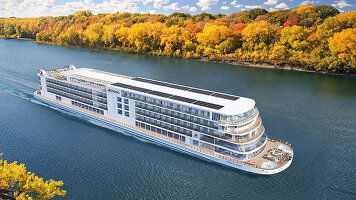
Viking's award-winning Longships® showcase innovative engineering, streamlined Scandinavian design and understated elegance. Read more

A Mississippi River cruise offers you the rare opportunity to sail through America's heartland. Read more
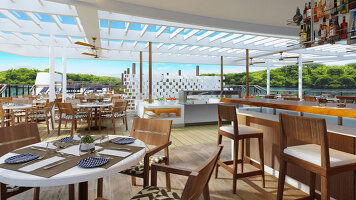
Elegant, light-filled ships thoughtfully designed to connect you to your destination. Read more
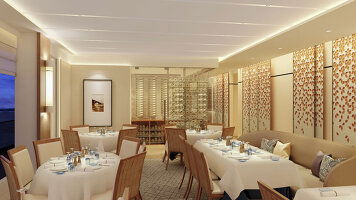
From relaxed, multi-course fine-dining to casual meals on the Aquavit Terrace. Read more

Viking proudly includes all that you need and nothing you do not and your river cruise fare. Read more

Viking offer behind-the-scenes insights and opportunities that set them apart from other travel companies. Read more
Download Brochure

Viking River, Ocean & Expedition Voyages (2025-27)
Prices & Dates
There are currently no departures available on this cruise. Either it's the end of the season and new departures will be released shortly, or this itinerary has been changed and is not operating this season. Feel free to contact us for information about when next seasons dates will be released or click here to view general release dates for all destinations.
Tour & cruises prices are per person. Prices shown have savings applied, are subject to availability and may be withdrawn at any time without notice. Pricing and trip details are correct at this point in time, however are subject to confirmation at the time of booking and are subject to change by Viking. For cruise itineraries, cabin images are sourced from the cruise-line and should be treated as indicative only. Cabin inclusions, upholsteries and room layout may differ to the image(s) shown depending on the ship selected and your sailing dates.
Similar River Cruises
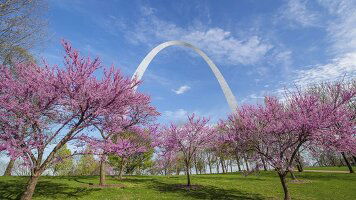
15 Days New Orleans Alton
Operated By: Viking



